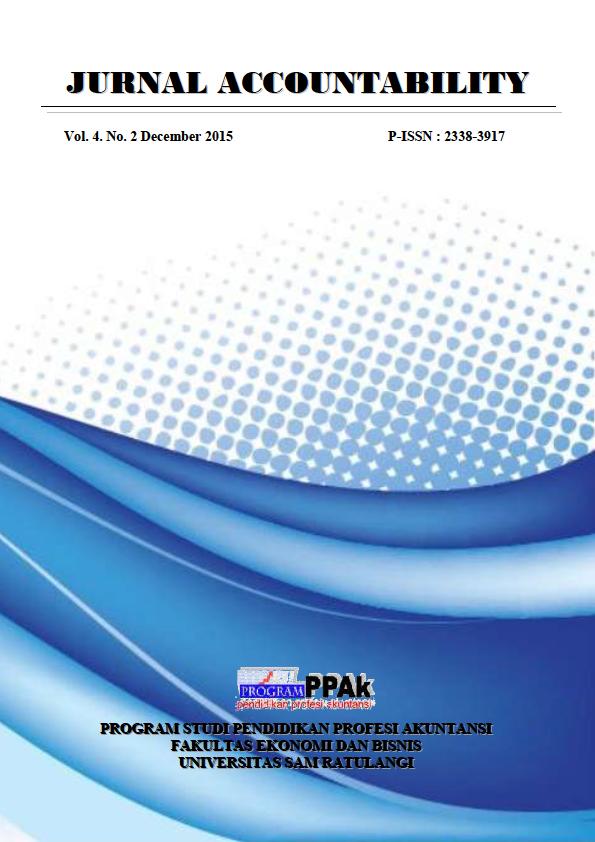PENERAPAN KEBIJAKAN EARMARKING TAX PADA PEMUNGUTAN PAJAK KENDARAAN BERMOTOR TERHADAP PEMBANGUNAN DAN PEMELIHARAAN JALAN DI PROVINSI SULAWESI UTARA
Abstract
Regional autonomy and decentralization setting authority for every area in their independence and realize the potential to improve people's welfare. One potential area that is growing is a local tax , which is currently setting based on Undang-undang No. 28 tahun 2009. In terms of social welfare legislation is mandated to allocate some funds for the construction sector activities withholding tax , this policy is known as earmarking tax. Motor vehicle tax is one tax that is included in this policy where the amount of the allocation that is at least 10 % of the proceeds and used for the construction of transportation infrastructure. In SULUT terms are defined in Perda No. 7 tahun 2011 in which the contents of its mandate in accordance with such provisions. The purpose of this study is to analyze the implementation of earmarking tax policy of motor vehicle tax in the province of North Sulawesi in accordance with the mandate of the legislation in force. The analytical method used is descriptive analysis. The findings of this study are earmarking tax policy in SULUT go hand in hand with SULUT budget system where revenues and expenditures through the general treasury area. In 2014 the expenditure for the improvement of road infrastructure facilities reached 97.96% of total motor vehicle tax in North Sulawesi, thus setting the tax earmarking in SULUT not in accordance with applicable regulations.Downloads
Published
2015-12-31
Issue
Section
Articles
License
The articles published in Jurnal Accountability are licensed under Creative Commons Attribution-NonCommercial 4.0 International with authors as copyright holders.
Â

This work is licensed under a Creative Commons Attribution-NonCommercial 4.0 International License.
Â
Under this license then authors free to:
- Share — copy and redistribute the material in any medium or format.
- Adapt — remix, transform, and build upon the material.
- The licensor cannot revoke these freedoms as long as you follow the license terms.
Under the following terms:
- Attribution — You must give appropriate credit, provide a link to the license, and indicate if changes were made. You may do so in any reasonable manner, but not in any way that suggests the licensor endorses you or your use.
- NonCommercial — You may not use the material for commercial purposes.
- No additional restrictions — You may not apply legal terms or technological measures that legally restrict others from doing anything the license permits.
Notices:
- You do not have to comply with the license for elements of the material in the public domain or where your use is permitted by an applicable exception or limitation.
- No warranties are given. The license may not give you all of the permissions necessary for your intended use. For example, other rights such as publicity, privacy, or moral rights may limit how you use the material.


